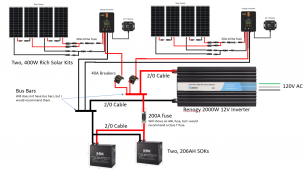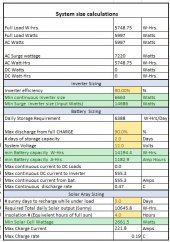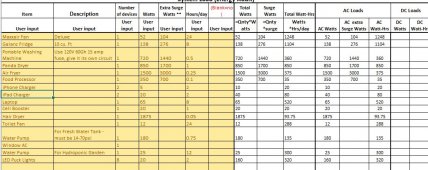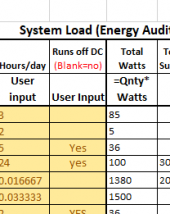The_Kobayashi_Vroom
New Member
Hi all. My name is Amanda - and this board is super overwhelming to me - BUT - I am eager to learn all I can. We are in the process of building a skoolie out of a 2011 Bluebird that we will be powering on solar and at least 1 propane appliance. Our heat at this time we plan on using a cubic mini stove. We have plenty of time in our planning - so I have no need to rush or cut corners. Our long-term plan will be to have our skoolie sitting on land off-the-grid, but not before doing a bit of traveling first. Things that I am working on figuring out are powering:
I have the book already - a recommendation from Reddit. I am thinking about just going with doing the Off-grid King recommendation setup and following that plan: https://www.mobile-solarpower.com/the-off-grid-king-power-anything.html
I'd love to hear if that is a terrible idea or if it might be best to do with my very very limited experience. I'm still learning all of the terminology and so honestly a lot of the jargon at the moment is like looking at a foreign language.
Thanks!
Amanda
- Maxxair Fan
- Fridge
- LED Lights
- Tankless Water heater (could end up doing this propane - we have not bought it yet)
- Washing Machine
- Small Dryer
- Various Kitchen Appliances
- iPhone/iPad chargers
- Laptop and WiFi for an audiobooth
- Hairdryer
- Composting Toilet Vent Fan
- Water Pump (for fresh water tank)
- Window AC (when the fan will not cut it)
- Small water pump for a hydroponic garden
I have the book already - a recommendation from Reddit. I am thinking about just going with doing the Off-grid King recommendation setup and following that plan: https://www.mobile-solarpower.com/the-off-grid-king-power-anything.html
I'd love to hear if that is a terrible idea or if it might be best to do with my very very limited experience. I'm still learning all of the terminology and so honestly a lot of the jargon at the moment is like looking at a foreign language.
Thanks!
Amanda










